Have you ever seen an electrical installation and noticed that there’s a single, distinctive red wire sticking out? The red wire is a common component of electrical wiring installations, but do you know why they’re necessary or what their function is in the circuit? We often come across these wires during various repairs and setups but don’t always have the information to explain them to those around us. In this blog post, we’ll take the mystery out of red wires and provide an informative overview of their purpose in our electrical systems.

What is the red wire in the electrical system?
The red wire in the electrical system is typically used as the hot or live wire, carrying power from the source to the load. It is often distinguished from other wires in the system by its color and/or size. In some cases, it may also be identified with a marking indicating “live” or “hot”. The use of a red wire helps electricians and other professionals identify which specific circuit carries power so that they can safely work on wiring systems without risking shock or injury.
Additionally, it allows for faster troubleshooting if an issue arises with an installation involving multiple circuits. It is important to know that all rules and regulations governing electrical wiring require proper identification of each wire’s purpose and function – including the red wire – for safe operation. Failure to do so can lead to serious injury or death in the event of a malfunction, as well as financial penalties for non-compliance. For this reason, it is always advisable to contact a qualified professional if you have any questions regarding your home’s or business’s electrical system.
US AC power circuit wiring color codes:
Understanding the color codes of US AC power circuits is important for safety and efficiency when wiring electrical systems at home or in the workplace. In the US, protective ground wires are typically bare, green, or green-yellow. Neutral wires are usually white, while single-phase line (or hot) wires can be black or red.
For three-phase circuits, the colors used are usually black, red, and blue for 208 VAC, while they are brown, orange, or yellow for 480 VAC. Wires with a larger gauge than 6 AWG will only be available in black and must be color taped at their ends. All wires must also be marked to distinguish them from one another.
It is important to adhere to local wiring regulations when installing AC power circuits, as different states or regions may have adapted their color codes based on what is most practical for each location. It’s also essential to note that these color codes should not be confused with the US National Electrical Code (NEC), which has its own specific set of guidelines related to AC wiring.
How to Red Wire in Electrical with a multimeter
The red wire in electrical wiring is used to indicate the live current. This can be recognized by a multimeter, that measures and displays the electric potential difference between two points in an electric circuit:
- Set the multimeter to measure AC/DC voltage, or resistance, depending on what you’re testing.
- Connect the red probe from the multimeter to one end of the wire and insert it into a live socket outlet for power.
- Touch the black probe from the meter to another end of the wire, making sure that it does not come in contact with any other metal part or material.
- Observe the reading displayed on your multimeter’s screen – if there is a current present, then it will be indicated as such by either an audible sound (if using the ‘continuity’ setting) or a numerical reading (if measuring volts). The reading should also change if you move either of the probes along the wire.
- If you don’t get any indication of current, then the red wire is not live and should be treated as such. It is important to exercise caution when conducting tests with a multimeter to ensure your safety and the integrity of the electrical systems around you. Ensure that the power source you are testing is turned off before making contact with either probe and always wear protective gloves while handling wires or other electric components.
Additionally, if necessary, consult an electrician for further advice on wiring safety procedures. Following these steps will help ensure that you can accurately identify which wire is live and which is not. Doing so safely will allow you to properly assess any potential electrical problems and safely complete any repairs or replacements. With the proper knowledge and safety precautions, you can confidently use a multimeter to identify the red wire in electrical wiring.
Frequently Asked Questions:
The red wire is typically used as a hot wire, meaning that it carries power from the source to an outlet or switch. In a 240-volt circuit, two red wires are required for proper operation. In some cases, a single red wire can be used when a wall switch controls an outlet.
Not necessarily. Hot wires may also be black or other colors, depending on the type of circuit being wired. In general, though, it’s important to identify the hot wire before making any connections.
A red wire typically connects to a switch or an outlet, depending on the type of circuit being wired. In some cases, two red wires may be used in a 240-volt circuit. It’s important to carefully follow wiring diagrams and instructions when connecting any wires.
No, you should never use a white wire as a hot wire. White wires are always neutral and should be connected to the neutral bus bar in an electrical panel.
Conclusion:
In conclusion, the red wire in electrical wiring is a live conductor that transmits electrical current. It is used as the positive terminal to complete the circuit, and can also be used as a switch leg for powering on/off devices. In a three-wire system, it may be labeled “R” or “L1”. If you are unsure what type of wiring configuration your project requires, it is important to consult an electrician for professional advice. Safety should always be a top priority when working with electricity!




